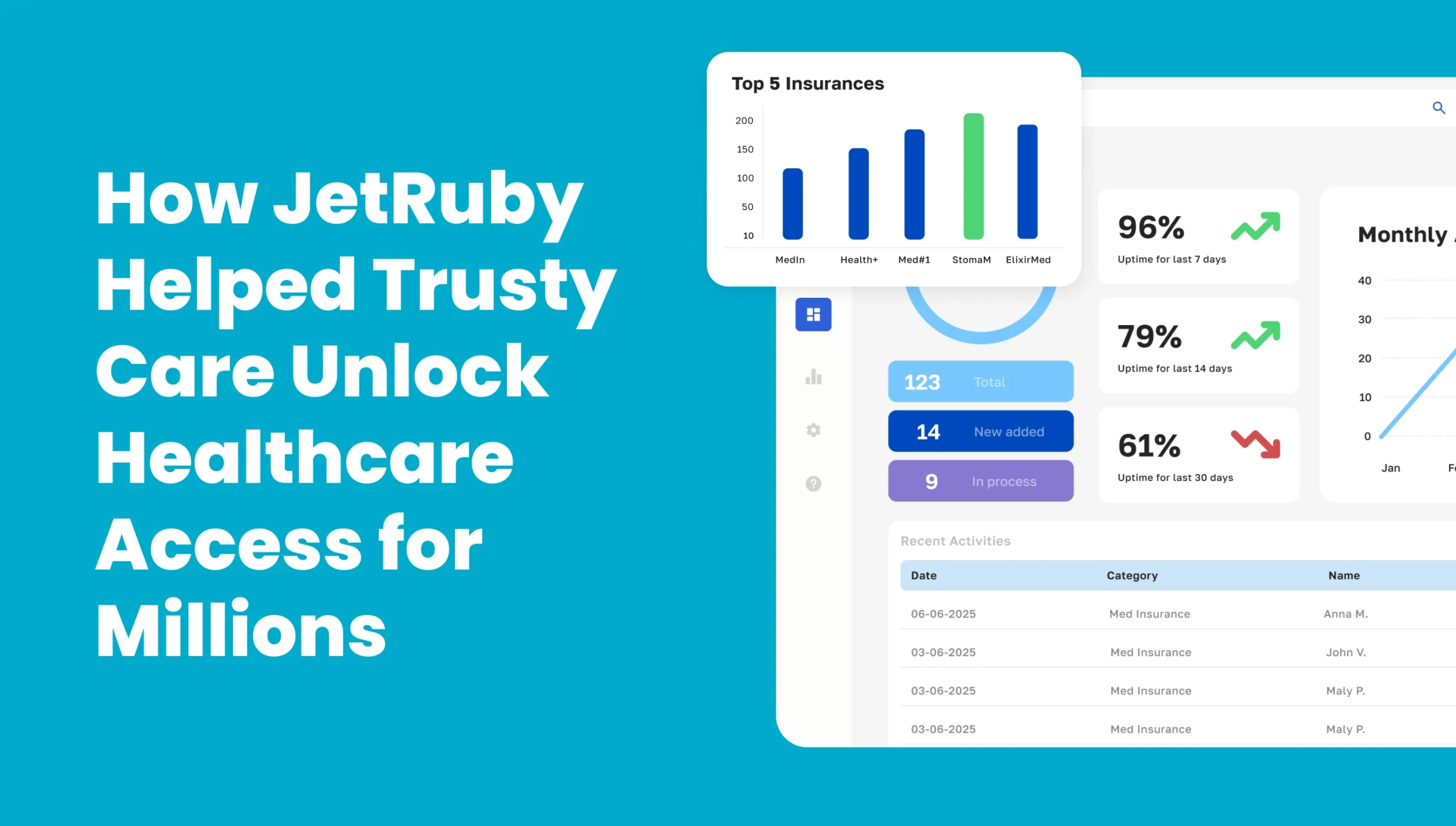Table of Contents
In 2024, the average cost of healthcare data breaches rose to a record high of $9.8 million per incident, according to IBM’s Cost of a Data Breach report.
For the first time, healthcare has become the most targeted industry, surpassing finance.
This scenario is concerning: healthcare platforms, which are to protect some of society’s most vulnerable people, risk major failures during peak renewal times. Each breach can result in significant direct and indirect costs.
Additionally, healthcare organizations are especially vulnerable because they handle large amounts of sensitive personal information, often using outdated technology.
For millions relying on insurance plans, Trusty Care was a lifeline.
Initially, Trusty Care purchased third-party software to improve user interactions.
They were concerned about a possible system failure during their annual renewal period, when 90% of users review their plans. This could cause technical issues and, more importantly, restrict access to essential healthcare services.
So, Trusty Care team asked JetRuby for help.
Immediately, we found old security issues that could endanger HIPAA compliance. Our job was to make sure security was a priority at every level.
We:
- Removed insecure patches and redundant logic. This way, we protected encrypted data flows.
- Updated access controls to keep sensitive user information safe.
- Ensured the system could adapt to changing healthcare regulations and integrate seamlessly with other services.
Sprints, Feedback Loops, and Iteration
Trusty Care had a strict six-month deadline. To meet this deadline, we used JetRuby Flow methodology to create an organized and team-focused development process.
We started with a Zero Sprint. Our Senior Solution Architect worked with Trusty Care’s team to perform a basic technical audit.
During this important planning stage, we identified weaknesses in the system, set goals for expansion, and set up continuous integration and delivery (CI/CD) systems along with automated testing tools.
From the beginning, we prioritized thorough documentation to help Trusty Care’s developers understand Node.js and Python. This approach would support their long-term skill development.
As development accelerated, we started working in two-week agile sprints to deliver regular improvements to the updated system.
In the early sprints, we removed unstable legacy patches, reorganized backend processes, and set up encrypted data flows compliant with HIPAA regulations.
Mid-project, we conducted load-testing sprints to simulate over 5,000 users simultaneously and confirm the system’s stability during peak times.
We also held biweekly demos with Trusty Care’s stakeholders to match improvements in user experience and interface with the needs of end-users. Additionally, we developed simpler designs for people with limited technical skills.
JetRuby Flow methodology includes a specific Performance & Alignment phase where a project coordinator closely tracks progress and potential risks. So, the coordinator conducted formal reviews every four weeks to recalibrate priorities as the annual renewal deadline approached.
Having more developers on board boosted our testing speed and made documenting everything much easier. Plus, the clear resource reports helped us keep a close eye on the budget, making sure everything stayed on track.
This ongoing cycle, supported by regular feedback, helped Trusty Care’s Python-focused team to learn the new tech stack and turn uncertainty into confidence.
Overcoming Key Roadblocks
Integrating a complex software product alone can be challenging.
No wonder, Gartner states that integration work accounts for 50% of the time and cost of building a digital platform.
However, the risks of maintaining legacy systems as they are are significantly higher.
According to the Paubox Report, 83% of healthcare IT teams say that outdated systems disrupt their daily work.
These issues affect the IT department and the entire organization. For instance, legacy email platforms can jeopardize operational stability and efficiency across healthcare organizations.
During work with Trusty Care, it was about integrating a new Node.js/Vue.js platform.
While it was a valuable asset, the platform had legacy issues that could harm its stability and future growth.
Trusty Care Enhancements: Legacy Code & Scaling Risks
Here’s how we addressed the project’s primary challenges.
Decouple & Document
We removed fragile workarounds and created comprehensive docs to bridge the Node.js/Python knowledge gap.
Scale Smartly
Our team redesigned the backend architecture for concurrent user loads, avoiding costly rewrites.
Future-Proof Maintenance
We reduced long-term costs by 40% via clean, maintainable code.
The Deadline Countdown
Close to the renewal window, a project coordinator and an additional developer joined the project team. Rigorous traffic simulations proved the platform could handle the pressure.
JetRuby enhanced the system to ensure it remains stable without any downtime during peak times and supports vulnerable communities. Meanwhile, Trusty Care’s team can focus on new ideas instead of handling problems.
For health tech companies like Trusty Care, legacy systems pose significant challenges.
However, if they work with a reliable partner, these challenges can turn into opportunities.
Our team combined strong technology with attention to regulations and, as a result, helped millions access healthcare services without any delays.
“JetRuby didn’t just fix our code — they restored our mission’s heartbeat.”
— Trusty Care Team




